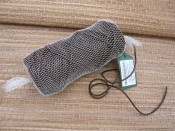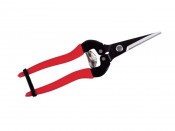These Clematis belongs to(Pruning Group 2), so they flower on short shoots developing from the previous year’s growth. They may potentially flower again in late summer on new growth.
Pruning Group 2 Clematis need pruning in late winter or early spring, and after the first flush of flowers in summer. In February, cut back to the above framework of old wood, leaving shoots with healthy buds. Avoid heavy pruning. Prune again after the first flush of flowers to encourage a second flush later in the season. Prune back by cutting to large buds or a strong side shoot immediately below the spent blooms. Cut off spindly stems.
Cultural information: Clematis perform best in a deep, rich soil that remains moist but well-drained. They like their heads in the sun but the base of the plant should be kept cool and shaded by other plants. Adding a mulch, such as garden compost, well rotted manure or bark chippings, will help reduce water loss and add nutrients to the soil. Plant your new clematis with the crown 5–8cm (2–3in) deep to encourage new shoots to grow from below ground level and keep it well watered during its first Spring and Summer. . Rootgrow (beneficial mycorrhizal beneficial fungi) sprinkled on the roots prior to planting will aid root development. Clematis are greedy feeders and benefit from regular feeding with Chempak Clematis Food.
Support: Clematis need to be well supported from the base upwards at all times as wind rock can cause the stems to break and wilt. They require a firm framework to grow on such as a trellis, obelisk or a pergola. During spring and summer, tie in young shoots using a soft tie such as Flexi-tie. Alternatively allow them to scramble through a large established shrub
Available for delivery in the following locations:
United Kingdom (England, Wales, Mainland Scotland, Scottish Islands, Scottish Highlands, Isle of Wight, Northern Ireland, Isles of Scilly)








